When paddling on calm lakes, it’s often possible to enter and exit a packraft without getting your feet wet, but in moving water I find that it’s rarely an option.
In fact, it’s usually a matter of scrambling over sharp rocks, jamming your feet between slippery cobbles, or wading through gritty sand.
I used to hike in heavy leather boots and carry Croc-like camp shoes on backpacking trips, but lately I’ve been transitioning to more of an ultralight backpacking approach, and now I carry a smaller, lighter pack so I can go farther, reduce the likelihood of injury, and be more comfortable on the trail.
Currently my footwear system includes:
- Trail running shoes (not Gore-Tex)
- Merino wool socks with light cushion for hiking
- Fleece socks for around camp and sleeping
- Gore-Tex over-socks
During the day I wear the trail runners and merino socks, and from time to time my feet get wet. Around camp, I put on the fleece socks with the Gore-Tex socks over top to keep my feet warm and dry in my wet trail runners (pull the insoles out so they dry faster and there’s more room for thicker socks).
Now that we’re entering the shoulder season and the temperatures are dropping, it’s pretty uncomfortable to paddle for extended periods wearing wet trail runners, and after several hours of hopping in and out of the packraft to scout rapids, I can feel my body core temperature dropping as heat is sucked out through my feet.
I’m thinking again about water footwear, and below is a list of the options I’ve considered, in no particular order. There’s no perfect water shoe – I’ve tried everything on the list except “barefoot shoes”, which I’d try if they weren’t so expensive, and “grip socks”, which I don’t think I’ll bother trying unless someone can talk me into them.
If you have a preference or other ideas, please leave a comment below!
Bare Feet:

Pros:
- Lightest option
- Quick drying
- Free
Cons:
- Poor grip on slippery rocks
- Zero foot protection – unacceptable on an extended trip or far from help where a foot injury could end in disaster
Neoprene Booties or Socks:
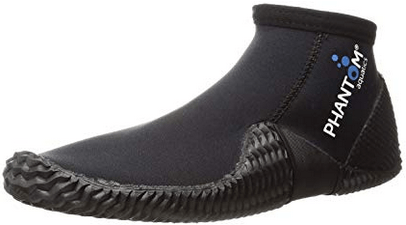
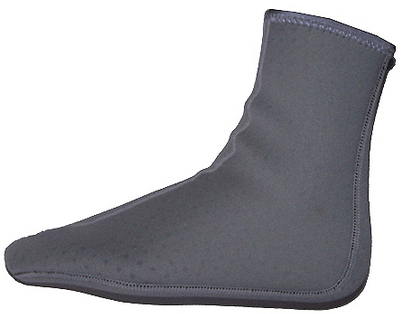
Pros:
- Warm
- Sand stays out
Cons:
- Heavy
- Dry very slowly
- Neoprene soaks up water weight
- Offer little protection from sharp rocks, except styles with heavy soles
- Poor grip on slippery rocks, except styles with heavy soles
“Barefoot” Shoes:
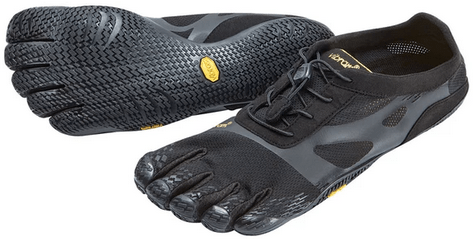
Pros:
- Some styles are very lightweight
- Offer some toe and sole protection
- Good grip
Cons:
- Expensive!
- Lighter styles offer little protection
- Some styles soak up water weight
Trail Running Shoes & Waterproof Socks*:
*Or plastic bags.
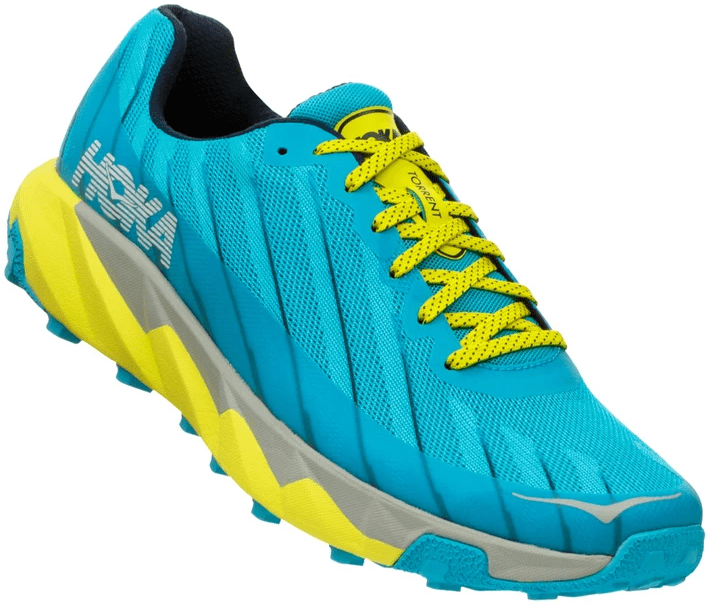
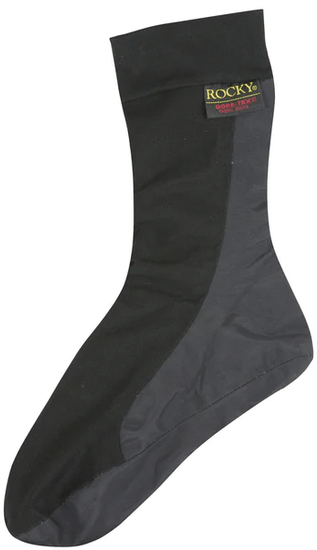
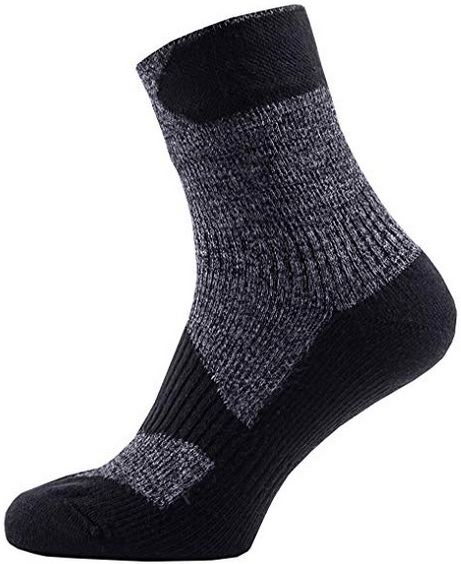
Pros:
- Comfortable
- Secure
- Excellent foot protection
- Excellent grip
- Sand stays away from feet
Cons:
- Shoes dry fairly slowly
- Shoes soak up a lot of water weight
- Cold wet feet if hiking without the waterproof socks after paddling
- Waterproof socks are pretty expensive (plastic bread bags are a cheap alternative)
- Waterproof socks could be damaged if sand gets into the shoes
- Some waterproof socks are quite heavy
Grip Socks:
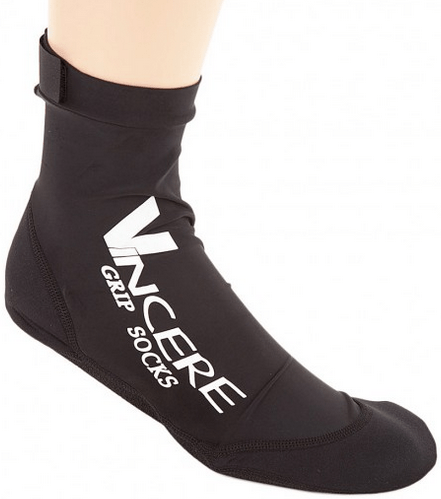
Pros:
- Compact
- Lighter than full neoprene socks
- Sand stays out
Cons:
- Thin sole doesn’t offer much protection
- Soak up some water weight
- Neoprene versions will dry very slowly
Water Shoes (“Aqua Shoes”):
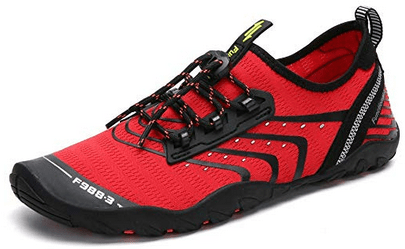
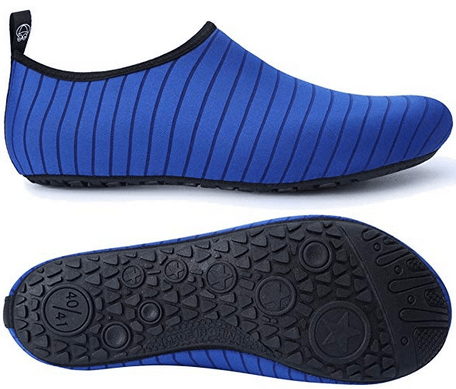
Pros:
- Fairly lightweight, depending on style
- Reasonably secure to very secure, depending on style
- Decent toe and sole protection, depending on style
- Good grip on most styles
- Keep out most sand
- Compact
- Drain well
- Dry quickly
- About 1/10 to 1/3 the cost of “barefoot” shoes
Cons:
- Soak up some water weight
- Lighter styles offer no toe protection
- Upper fabric tends to develop holes at the toe
DIY Ultralight Camp Shoes:
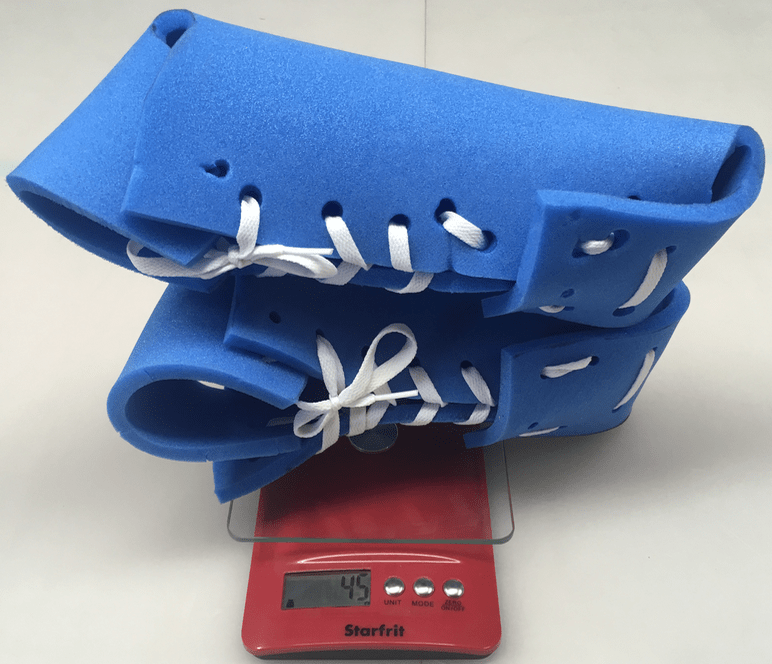
Pros:
- Ultra-lightweight (only 45 grams or 1.6 oz per pair!)
- Warm
- Drain well
- Fashion forward
Cons:
- Laughably ugly
- Bulky
- Poor Grip
- Insecure
- Soak up some water weight
- Sand gets in and chafes
Flip Flops (a.k.a. “Thongs”):
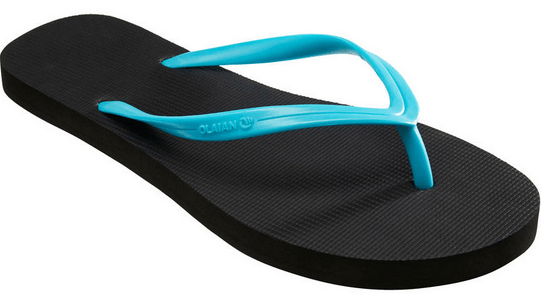
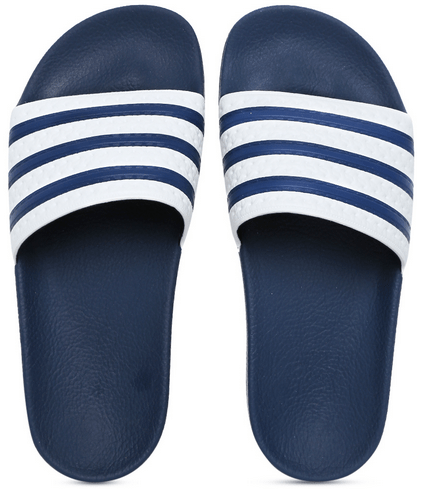
Pros:
- Compact (some styles)
- Drain well
Cons:
- Sand and gravel get in and chafe your feet
- Not secure – feet slide around on uneven terrain
- Poor grip
- Most styles are heavy
- Some styles soak up a lot of water weight
Foam Clogs:
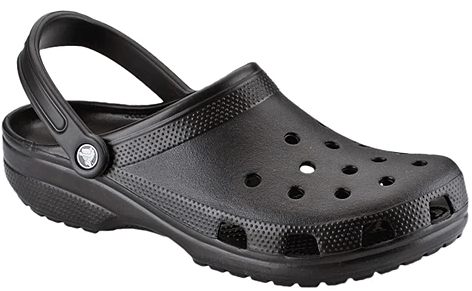
Pros:
- Good toe protection
- Dry quickly
- Soak up no water weight
- Drain well
Cons:
- Heavy
- Bulky
- Sand and gravel get in and chafe your feet
- Grip isn’t as good as other sole materials
Sport Sandals:
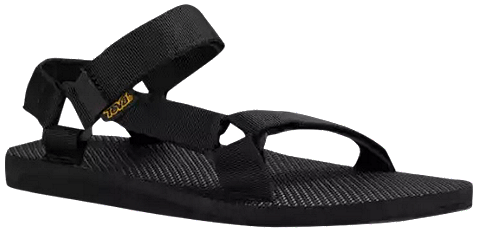
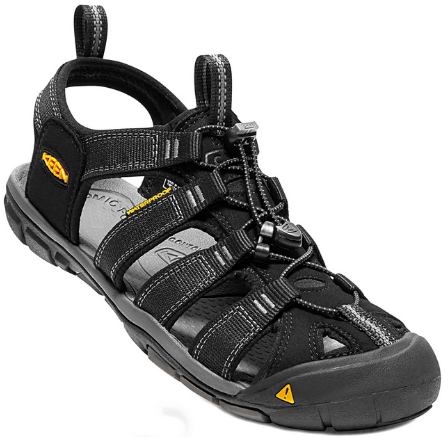
Pros:
- Secure
- Comfortable
- Drain well
Cons:
- Heavy
- Little to no toe protection (except a few models)
- Sand and gravel get in and chafe your feet
- Sticks get stuck in the straps
- Straps soak up water weight and dry slowly

10 Comments
Bruce Campbell · March 28, 2021 at 12:46 am
I have used Teva sandals over various dry suits while kayaking and whitewater canoeing for a couple decades. I was surprised to wander by REI the other day and discover they are now vastly lighter than my older ones.
The best dry suits were super light ones made by Kakotat, sold by Alpacka. They were fantastic two piece suits, the top served as rain gear too. But they weren’t “fashionable,” just easy to put on, easy to wear, long lasting flexible and light breathable fabric. Everything I wanted, but I kept struggling into my one piece until they were discontinued, alas.
The most comfortable dry suit bottoms I currently have, however, are simple stockingfoot waders. Which I use with a splash top. And yes, helmet, biggest life jacket, rescue gear, the works. Not exactly ultralight.
IMO, if you consider making your own drysuit, use 2-ply or 3-ply breathable fabric. (I’ve been thinking Ripstop by the Roll’s 1.4 oz 10D breathable ultralight ripstop, with breathable heat seal tape.) Rockywoods Fabrics offers a pattern for rain gear that might serve as a general guide, just extend the legs into simple over socks to fit inside shoes.
(My first dry suit was waterproof and it was sweat filled, damp and horrible. So, IMO, don’t use air tight waterproof TPU fabric. Yuck.)
NRS has a better watershoe than my decades old ones, I want to try for boating. But for hiking and packrafting, I think Matt is right to use an ultralight low hiking or trail running shoe, sized large enough to include gortex socks. It’s what my friend Roman Dial uses wandering the Brooks Range.
Bruce
Fairbanks
Matt (Admin) · March 31, 2021 at 8:51 am
Yeah, I’d love to see a new ultralight drysuit offering, or a DIY kit… if only there were more hours in the day! If you try the Ripstop by the Roll stuff, please tell us how it goes! A while ago I was looking into options and it seemed like the latex neck/wrist/ankle gaskets were hard to come by and expensive, but I made a neck gasket out of TPU film that worked pretty well, so that’s an option.
Robert Ruff · December 12, 2020 at 7:45 am
I fly fish and have a variety of waders for different conditions. Much of the time, I’m hiking in somewhere also. The ones I end up using most frequently are hip waders. I use a brand called Chota Hippies, https://www.chotaoutdoorgear.com/products/chota-hippies with a hiking wading boot. I know something like this isn’t for everyone but it is an option if you don’t want to get your feet wet or if you expect to be portaging quite a few times in cold weather conditions. Obviously this would be a non-whitewater situation such as a lake or slow flowing rivers or strictly using an open configuration packraft.
Pilotpeat · May 11, 2020 at 9:55 am
I have a pair of toe shoe like shoes (different brand, I think Body Glove?) that I found on sale at Cabela’s a number of years ago. They work great for getting across the rocks/mud/sand in and out of my hard shell kayak. They have drain holes in the bottom with wire mesh so nothing big get in but they do get a little grit or light sand inside if the bottom under whatever water you are walking in has that. So;
Pluses;
Comfortable
relatively light weight
very secure (no laces but a velcro strap across the top and a little bungee around the ankle)
Good grip/traction
water drains out easily
Cons;
Do get a little bit of light grit in them sometimes
A little difficult to get off when wet
Not super cheap, but reasonable when found onsale.
The ones I have are an older version of these:
https://www.bodyglove.com/products/3tbfm13m-bkyl-mens-3t-barefoot-max-water-shoe-in-black-yellow?variant=18108200550458¤cy=USD&gclid=EAIaIQobChMI5vC-oKOs6QIVWxitBh2KuAHpEAQYCCABEgJLo_D_BwE
Matt (Admin) · May 11, 2020 at 12:51 pm
Thanks for the comment! That’s cool that they’ve integrated wire mesh into the drains to keep out most of the grit – I guess that’s the kind of attention to detail you get when you pay a bit more. Cheers!
Arnold · November 22, 2019 at 4:17 pm
Matt, understood and it would be a nightmare. I like your suggestions and might even take mine and disassemble/cut mine along the seam lines, layout the pieces on TPU coated fabric, trace and use strips, per your suggestion, to connect the pieces. Have all the equipment from my V2. Bottoms: I have some 330D single sided TPU. Leaving the TPU on the outside, I’ll double up, “face to face” for a bit more durability. I like your idea of seamgrip with sand. The number of steps one takes from on to off is in the single digits, but having some gription on the rocks is key. Thank you!
Arnold · November 22, 2019 at 7:39 am
Late to the party on this topic! I’m coming at this from a bit of a different angle. I use my DIY packraft mainly to cross rivers during colder months vs. longer trips across lakes or down rivers when it’s warmer. Also, I usually have heavy hiking boots on. I just need something to put over my boots, up to my hips to get in and out of the raft with my boots on to keep boots and pants dry. I’ve tried Hodgman Gamewade packable waders and was warned about their longevity. Should have headed those warnings! They are very inexpensive, but started to leak on trip #2. I patched that leak and each trip provides another leak to chase and patch. Others have used Wiggy’s Light Weight Waders for short stream crossings, etc.. They seem to be worth the money.
A person can dream! How about selling patterns for TPU/DIY over-the-boot-or-shoe waders? They’d need a D-ring-type patch at the top for webbing to go over/under a belt. I can’t imagine how small the market would be, but I count for one (1), so at least it’s not zero.
Great topic overall to help us get better use from our packrafts.
Matt (Admin) · November 22, 2019 at 12:09 pm
Hi Arnold – interesting! I probably won’t offer something like this because people come in so many different shapes and sizes it would be a tremendous amount of work, but I think it would be reasonably easy to make a set of lightweight waders using your old ones as a pattern. I’d approach it by purchasing a meter or two of fabric in the weight you want to use and then lay your existing waders on top and kind of trace around them, front and back, adding a bit of an allowance so you have some extra material to seal together around the edges. You could then seal them together with a seam strip (like a packraft’s tubes). I’m not sure how to go about making the boot cover parts (specifically the soles), but doing it the way a leather moccasin is put together might work. You could use packraft floor fabric there, but I’m not sure how grippy that’d be on slippery rocks… maybe coat the bottom with Aquaseal and then sprinkle sand on it while it cures for good grip. Cheers!
Ted Fisher · October 7, 2019 at 10:01 am
I’ve used the toe shoe things, but I’d put them in the same category as the water shoes, not bad but not great.
For me, crocs and thin biking socks work great when it’s warm. Crocs and neoprene socks work good in the shoulder season. The socks prevent the chafe, you can do some light hiking, and use them as camp shoes.
Your ultralight shoes made out of closed foam would be interesting to try!
Matt (Admin) · October 7, 2019 at 1:05 pm
Thanks for the tips! I only used my DIY shoes once because they were so slippery, but I might try to improve the grip somehow – if it works, I’ll post an update. Cheers!